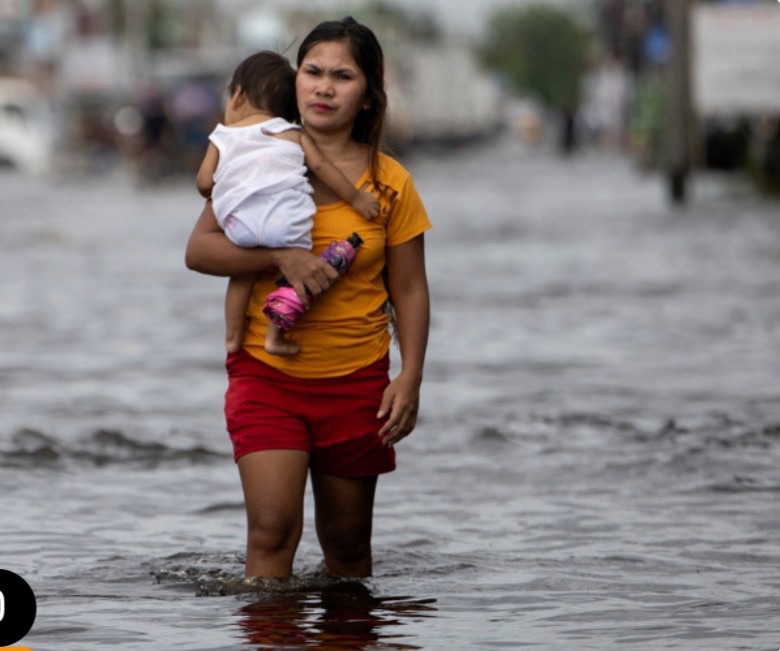
Typhoon Co‑May, known locally as Emong, swept across northern Luzon this week, triggering widespread flooding, landslides, and destruction across the Philippines. The deadly storm has claimed at least 25 lives, displaced nearly 280,000 residents, and left a trail of damage across dozens of provinces.
Storm’s Path and Impact
Co‑May made landfall late Wednesday in Agno, Pangasinan, with sustained winds of up to 120 km/h (75 mph) and gusts reaching 165 km/h (102 mph). Though the typhoon weakened as it moved inland, its effects were intensified by the seasonal southwest monsoon, worsening the deluge across much of Luzon.
Hardest-hit areas include Bulacan, Pampanga, La Union, Rizal, and the Calabarzon region. Torrential rains flooded homes, swept away vehicles, and submerged farmlands, prompting over 80 towns and cities to declare a state of calamity, allowing faster access to emergency funds and price controls on essential goods.
Human Toll and Displacement
25 people have been confirmed dead, many from drowning, landslides, and electrocution
At least eight individuals remain missing as search and rescue operations continue
Over 278,000 people have been evacuated into government shelters or taken in by relatives
More than 3,000 homes were damaged or destroyed. Widespread power outages, flight cancellations, and blocked roads hampered emergency response efforts.
Government and International Response
President Ferdinand Marcos Jr. visited evacuation centers in Rizal province, where he personally distributed food packs and reassured survivors of continued support. “We must now recognize that these disasters are becoming the new normal. We need to adapt, and quickly,” the president said.
The Philippine military, coast guard, and emergency agencies have mobilized for relief and rescue operations. Civilian volunteers are also assisting in remote communities cut off by flooding.
International aid has begun to arrive. The United States donated $250,000 through the UN World Food Programme to support relief operations and food distribution.
Climate Reality: A ‘New Normal’
Typhoon Co‑May is the fifth major weather disturbance to strike the Philippines since the onset of the rainy season just weeks ago. Experts warn that extreme weather intensified by climate change is becoming increasingly frequent and destructive.
Flooding earlier this month affected over 3.8 million people, with large areas of farmland ruined, roads destroyed, and entire villages left isolated.
What’s Next
While Typhoon Co‑May has weakened, weather forecasters warn of further rain in the coming days. Communities remain on high alert as authorities monitor additional weather systems projected to form in the Pacific in the coming weeks.